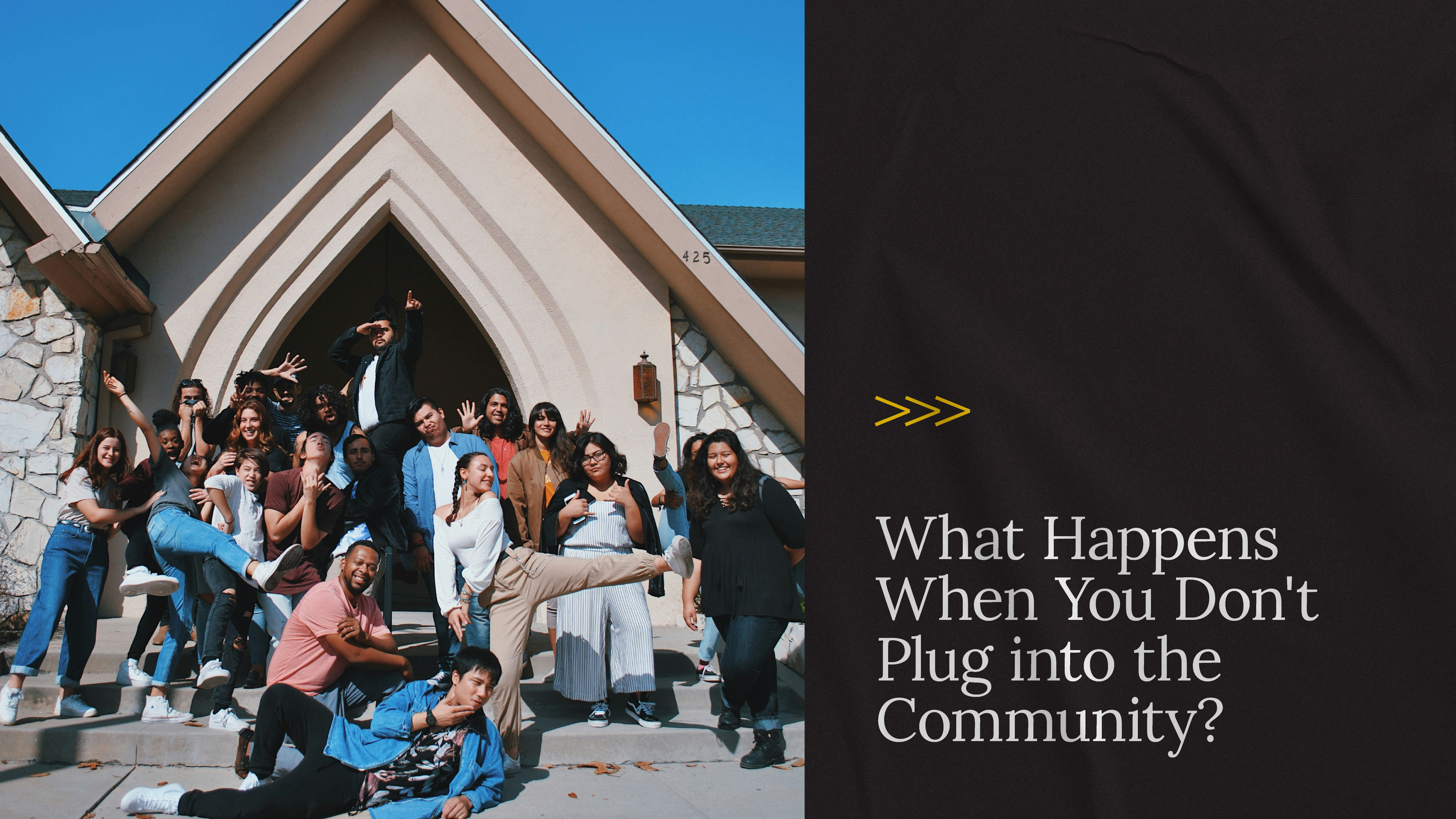
Creating and nurturing relationships within the community is a key role of the church. Yet, I find it’s so easy for churches to deprioritize that critical area with the antiquated belief that the outside community should come to them.
It’s like we’re expecting that outside group to realize, on their own, that they need the church. It’s a “when they realize what we have, they’ll come to us” mentality – and it doesn’t work. We are called, both individually and as a church body, to go out and reach the local communities surrounding our churches.
So, how do we do that beyond local outreach initiatives? How can we “see” the community around our churches and engage with them in impactful and influential ways on their ground while maintaining our calling and function as a faith-based organization?
The answer is a willingness to empower churchgoers and activate church buildings to have an impact beyond Sunday morning services and mid-week Bible studies. We have to find ways to send a message to our community that in order to engage with us, you don’t have to come to us. We will meet you where you are and help you with things you genuinely need.
The more I work with churches across America, the more I realize this is more than good advice. It’s critical to the Great Commission and the building of healthy churches everywhere. When churches make local communities come to them, rather than the other way around, it can undermine the relevance the Church has in its communities.
The Community Calling of the Church
One of the most profound things about the Gospel story is this: when Jesus was sitting in his sanctuary, His perfect Eden, looking down on the sin and brokenness of the world, He wasn’t repelled by it: He ran to it. On Earth, Jesus met the poor, the hurt, and the underprivileged where they were and in their most pressing tangible needs. Even Abraham Maslow, ironically a pronounced atheist, uncovered this correlation to the Gospel in his hierarchy of needs.
There are a lot of churches that are great at local outreach, so please don’t misunderstand. What we are talking about here isn’t doing it in the first place. It’s taking it up one level. Instead of solely having the goal of being a great church in the community, which many churches are, try to be a great church for the community by providing tangible, daily needs to the community surrounding the church.
Like Jesus’ model, this involves first asking a question:
“Community leaders, what do you need that our church can provide, specifically with the spaces we have that we are not using Monday to Friday?”
The answer isn’t always the same. Here are a few examples of ideas that churches have done well:
- Indoor spaces for inclement weather: In northern states, churches are building indoor play spaces they use on Sundays for parents who need a place for their kids to run around while it’s snowing on a Thursday – complete with a third-party operated cafe for parents to grab a cup of coffee and a sandwich while they are watching their kids.
- Childcare: There is an enormous deficit of childcare in our country. And typically, the parents with younger age children are exactly who the church is trying to reach. One church I saw had three small groups start from parents dropping their kids off in the morning, almost all of whom were not members of the church (yet). This year alone, Ministry Solutions Group is looking to open 40 - 50 childcare centers within churches we work with, which generates income well into six figures while also introducing the church to new families.
- Pickleball courts (and the like): One of our clients has four pickleball courts that host 2,500 to 3,000 unique visitors per month. This crowd also feeds the cafe adjacent to the courts, which provides funding for the church’s Local Good Center. In one week last year, this church had 38 people sign up to serve at the Local Good Center who were not even in the church database yet!
- Meeting and event spaces: A lot of suburban live-work-play communities don’t have this type of community space to meet, whether a small meeting or a high school graduation. We have even had projects where local municipalities provided funds to help build the space because the community needed it so much. As the "zoom town" movement continues to take place, the need for these spaces will continue to grow.
- Unused land: Churches own huge chunks of unused land all around the country. We have walked many clients through a land use plan as they sold unused parcels of land for millions or tens of millions of dollars. This went straight to funding the mission of the church and allowed the community to develop much needed spaces (which also brought traffic onto the site of the church).
The list goes on, but asking the question of how we can serve the community with our resources beyond outreach initiatives not only unlocks opportunities for monetization, but for mission. It helps us reach individuals and families on Tuesday afternoons that we wish were with us on Sunday mornings.
The Ministry Solutions Group team has worked with a lot of churches. In that time, I’ve found that despite the endless uses for church real estate, many of the older organizations follow a traditional church model when it comes to community engagement. They see their church as a pure, focused source of God-centered experience in the midst of a local community focused on the busy, humdrum demands of daily life.
It’s true that the core offering of a church is a source of spiritual value, and community members can seek it out if they want to participate in and benefit from that spiritual experience. Don’t get me wrong. That’s not going away.
What we are talking about is the wastefulness of adhering to that inward-facing approach to outreach. When we wait for community to engage with our churches, we are ignoring another front door to get people into our spaces where we can serve them in relevant ways – and that has an impact on the trajectory of our churches over time.
What Happens When You Don’t Plug Into the Local Community?
When churches operate in that old-school approach that doesn’t go beyond Sunday services and faith-based events, it can have serious consequences over time. When you get down to the root issue, a church that isn’t plugged into its local community needs will not grow. At best, it will maintain and, in most cases, it will shrink until it is finally forced to close its doors due to the burden of administrative costs, internal division, changes in leadership, or some other problem.
It’s also easy for an inwardly focused church like this to mix up its priorities. This is how you get head-scratching stories about ministries tearing down beautiful, high-functioning attached buildings to put in more parking rather than using them as a homeless shelter or daycare center. To slightly misquote the Canadian singer-songwriter Joni Mitchell, we’re paving paradise to put up a parking lot.
I think it goes without saying that this is working backward, and it doesn’t do your church any favors. It’s easy to fall victim to more subtle scenarios, too. Here’s an exercise for you and your leadership team. Don’t just ask yourself if your church has made any clear outreach-related mistakes. Instead, ask yourself:
What have you not done to reach your local community?
This is the million-dollar question that will propel your church toward your local community with Godly love by doing two things:
- First, asking what you haven’t done for your community pushes you to be proactive about reaching the lost and building the Kingdom.
- Second, it helps you consider what your local community needs and not the other way around.
That second point is critical. Remember that traditional church model? By activating your buildings and repurposing your resources to meet local community needs, you turn that approach on its head. Instead of making your community come to you, you go out and meet your community’s needs.
This Jesus approach shows your local community members that you are invested in meeting their needs as well as sharing the Good News of the Gospel with them. It’s a synergistic combination that Jesus modeled, and we shouldn’t forget.
What Does Plugging Into the Local Community Look Like?
So, how do you plug into your local community? How do you get people to your church on a Tuesday afternoon or Thursday morning to meet their own needs if they aren’t coming on Sunday?
Opening up your church coffee shop, “He-Brews,” for a few extra hours during the week doesn’t answer a community need. You need to invest in initiatives that create spaces that are desirable and reflect community needs. You want to be a great church for the community, not just a great church in the community.
Each local community’s needs differ from the next, which means discovering how you can serve your local community takes genuine investment on the part of your church’s leadership team. If you’re in Plano, Texas, meeting local community needs could be a very different answer than a church in Austin. Your local community might benefit most from a reputable childcare program, a quality community center, or a remote-work-friendly coffee shop (that is predictably open Monday through Fri and has a reasonable name).
It’s important to take the time to gather information and identify community needs before making decisions. Sounds obvious, right? In my experience, though, I’ve found that most churches do this backward. That’s why Ministry Solution Group has created our Clear Path Forward process. It thoroughly addresses the information-gathering phase and sets you up to make clear, confident decisions that empower your church and help it effectively plug into your community.
If your church is struggling to effectively reach your local community, contact our team. Together, we can explore how you can meet community needs, expand your outreach, and ultimately grow your church.
- Buildings and Finance Insights (74)
- Ministry Insights (71)
- Organizational Insights (62)
- Church Growth (59)
- Leadership (48)
- Buildings and Finance (37)
- Facility Strategy (33)
- Financial Strategy (29)
- Digital Engagement (28)
- Organizational Clarity and Strategy (28)
- Featured Insight - Buildings and Finance (23)
- Multisite (21)
- Digital Engagement Insights (19)
- Buildings That Fund Ministry (17)
- Media (17)
- Featured Insight - Buildings That Fund Ministry (15)
- Church Debt (12)
- Ministry Growth (12)
- Hiring (6)
- Strategy (5)
- Insight FEATURED (4)
- Ministry Strategy (4)
- Church Mergers (3)
- Digital Strategy (3)
- Featured Insight - Multisite (3)
- Merger Insights (3)
- Clarity (2)
- Consultants (2)
- Data Analysis and Reporting (2)
- Featured Insight - Digital Engagement (2)
- Ministry Solutions Group (2)
- Organizational Leadership (2)
- Clear Path Forward (1)
- Consultants - Ministry Strategy (1)
- Featured Insight - Project Financing (1)
- Featured Insight - Succession Planning (1)
- Ministry Solutions Group Team (1)
- Succession Insights (1)

 Nathan Artt
Nathan Artt
Thoughts or insights? We'd love to read them. Please share your insights below.